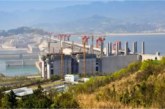
Accommodating about 16 per cent of the world’s population, India is endowed with only 4 per cent of its water resources. With the present population of more than 1.20 billion, the per capita water availability in India is around 1,170 cu m/person/year. Acording to World Bank estimates, India has presently the capacity to store about 200 BCM of water and irrigated area of about 90 Mha. However, due to rapid development, increasing population and iniquitous distribution of water, the demand for this natural resource far outweighs its supply.
Viewed in a broad perspective, the water sector in India has been confronted with significant and problematic issues related to management. In spite of a sizeable water resource base and vast land resource, India continues to struggle to meet its water sector infrastructure requirements, including operation and maintenance costs.
The water sector in India is faced with some crucial issues, which inter alia include (i) erratic distribution of rainfall, frequently leading to floods and droughts in various areas; (ii) water use inefficiency; (iii) unregulated groundwater extraction; (iv) water pollution; and (v) decreasing water quality due to poor waste management laws, inter-state river disputes, growing financial crunch for development of resources and scarce safe drinking water. Besides, inadequate institutional reforms and ineffective implementation of existing provisions also impact on the performance level for water service delivery.
Water and Corporate Sector
Water is both an important input for many different manufacturing and industrial sectors and used as a coolant for machines, such as textile machines. Cheap water that can be rapidly pumped from underground aquifers has been a major factor in the success of India’s economic growth.
Most of the fresh water used by industry is provided by groundwater, rainfall and snowfall that eventually collect in rivers, lakes and reservoirs that can be used for recreation and tapped for consumption. Watersheds help to regulate water quality for drinking, agriculture, and industrial use by naturally filtering sediments and pollutants.
Despite the many benefits from a thriving economy, industrial waste is largely responsible for the high levels of pollutants found in India’s rivers and groundwater. Many corporations end up polluting the very water they later need as an input. According to broad estimates, industrial water use in India stands at over 55 billion cubic meters or nearly 6 per cent of total freshwater abstraction. This demand is expected to increase dramatically in the next decade, given the enormous forecasts of over 10% growth for 2020 alone.
Climate change is expected to alter the timing, magnitude, and duration of rainfall and extreme weather events across the globe. These changes could turn arid and semi-arid regions into deserts, while exposing wetter regions to dramatic increases in flooding from higher rainfall, typhoons, and hurricanes.
No company is safe from these risks. As water sources are degraded or lost altogether, companies could experience supply chain disruptions, be forced to introduce costly alternatives to traditional inputs and face new regulatory and legal risks. Few will escape pressure from stakeholders (including regulators and investors) to be accountable for their contribution to the problems.
Changes in water supply and demand generate several categories of business risk and benefit. The combination of water scarcity and unpredictability poses a variety of risks and benefits to companies. Many companies are not fully aware of the extent of their dependence and impact on water resources and the ecosystems that provide them. Furthermore, those firms that do conduct analyses of their reliance on water tend to focus only on mitigating risks without recognizing the potential business opportunities associated with protecting natural capital. According to the World Resources Institute, these oversights may cause companies to be caught unprepared or miss new sources of revenue associated with ecosystem change.
As water systems change, businesses will be increasingly exposed to risks. They will have a choice to make about how to respond to these growing risks: Should they invest in built solutions or natural ones? The financial value of natural capital becomes particularly apparent when the costs of protecting an ecosystem for improved water quality or flood control are compared to investments in new or improved gray infrastructure, such as purification plants and flood control structures. In many cases, companies are finding that investments in natural capital or ‘green infrastructure’, in the form of wetlands, forests, grasslands, and coastal habitats perform many of the same tasks as gray infrastructure often better and more cost effectively.
Water is a finite source and in view of shrinking water resources owing to fast depletion of ground water aquifers, melting of mountain glaciers and contamination of surface and ground water resources, growing demand for water in agricultural sector, domsetic sector and industrial sector will be very difficult to meet. Water conservation and recycling of waste water for reuse provide some solution to meet the growing demands, especially in the industrial sector.
Broadly speaking, water treatment costs can represent huge amounts of money well beyond the conservation investments necessary to maintain watershed ecosystems in good condition and can perform the same functions to improve quality. Instead of covering cost of filters annually, energy for sediment removal, water purification chemicals or new treatment plants (gray infrastructure) it can be more efficient and beneficial to invest in water conservation, green infrastructure and water conservation literacy.
Water Conservation
Water conservation entails the policies, strategies and activities to manage water as a sustainable resource to protect the water environment and to meet current and future human demand. In view of fast depleting groundwater resources and adverse impact of the ongoing process of climate change, water conservation has assumed immense significance. Like individuals, water conservation is a sine qua non for the corporate sector in India as well.
A steadfast commitment to water conservation is essential. Prior experiences amply demonstrate that for any program to be successful, the desire to conserve water must be present from the highest level of management on down. Upper management should understand that water conservation is necessary and be fully committed to its support. It has been often observed that companies that assign responsibility to an individual have better results than those that do not. So, it is necessary that someone within organization should be assigned responsibility for creating and implementing and maintaining water conservation programmes.
It also devolves on the companies to determine as to how and where water ought to be used. It is essential to ascertain as to how much water is being used for each of organization’s industrial processes and/or domestic needs. To assist in determining how on-site water is being used, the concerned company can install sub-meters.
The companies engaged in extensive use of water are called upon to set a water conservation goal. It is important to have realistic goals, but goals high enough to require substantial effort. These goals should be allowed to serve as progress reference points. They will illustrate the effectiveness of company’s water conservation program.
Involvement of employees of the company in the water conservation is essential to have fruitful results. Employees can be imparted proper training in water conservation through water literacy programmes with the help of a civil society. It is interesting to note that many companies have posted signs throughout their facilities, which help to create an awareness of water conservation among the employees. Besides, creating competition among employees (for instance, establishing which work shift can use the least amount of water) is another idea. Once employees start thinking about their water use, water consumption usually decreases.
Another effective water conservation measure is to install low flow devices within the premises of the company. Encouragement should be given to use toilet tank displacement devices or install vacuum flush toilets. If the organization is already equipped with these types of toilets, it should be ensured that they are adjusted to use the minimum amount of water required per flush. All showering facilities should be equipped with low-flow showerheads. Showerheads with on-off valves provide the opportunity to conserve more water than those without. Similar measures should be taken for all faucet fixtures.
It is equally important to monitor results of water conservation measures adhered to in the company. Each water bill of the company includes its consumption history. It is possible to follow this history and get an immediate idea as to how well contemporary water conservation measures are doing compared to last year during the same months billing period. Use charts, graphs, and other records can be adhered to keep track of water conservation progress.
Adherence to water conservation measures in an effective manner helps in augmenting business profitability. Water costs account for 1–2 percent of a business’ overhead. Saving water can help reduce overhead costs. As water prices are set to rise above inflation, saving water can help reduce costs in the future. Besides, using water efficiently will make additional water available for future production.
Water Use and Conservation Audit
Performing a water audit of company’s facility is the first step in designing an effective water conservation plan. A water audit surveys all water-using or conveying fixtures, plumbing, equipment and practices at a business or manufacturing facility to determine the present water uses, losses and conservation practices and to recommend improvements. A water audit serves as the starting point for identifying losses and implementing useful water efficiency practices.
An audit for a large facility that uses vast quantities of water is a significant undertaking. The following steps are suggested as a general guide to the water audit process. Since these are generic suggestions, not all portions of the audit process may apply to a company’s water facility.
Identifying water source
Where does company get water from? Is it from an offsite municipal supplier, an onsite community water supply, an onsite private water supply, a surface water body or a combination?
Gathering all existing information including
- Water and sewer bills.
- Maps, schematics, and floor plans of the distribution system, plumbing and equipment.
- Number of employees/occupants and their schedules. Does water facility have shifts covering the entire 24 hours? These factors make a difference in the magnitude of water use.
- Capacities, storage and water use of all appliances, fixtures, pumps, hoses, rinse tanks, cooling towers, recycling ponds and other water-using equipment and structures.
Quantifying water use from each source
If company’s water facility is metered this task is easy. Water use can be calculated on the basis of a 24- hour period. Record the meter readings at the beginning and end of the 24 hours. Subtract the initial reading from the final one. This is how much water you used on that day. Do this several times and average the daily readings. If company’s water facility is not metered, there will be need to estimate water use based on the use type and equipment possessed by the company, employees/occupant numbers, and information gathered earlier. Use of a portable, non-invasive, ultrasonic water meter to measure flows at various points in the facility can be made. This is a device that clamps onto the outside of pipes and, using ultrasound, measures water flow through the pipe.
Performing the audit
- Catalog all water-using devices and measure daily use of each. Note the number of each, the manufacturer and the amount of water each uses. Don’t forget to include fixtures and practices employed in outside water use.
- Identify and quantify water losses due to leaks for each device. This can be as simple as comparing manufacturing specifications with meter readings. If the device uses more water than the manufacturer recommends, then it is possible there is a leak.
- Determine water consumption for each device. Consumption = water in – leaks – (waste) water out. For instance, consumption can be blow down, or the water used to make your product, such as concrete or bottled beverages, or the water left in linens after washing that is subsequently lost in the drying process.
- Identify and quantify water conservation devices and practices already in place. Quantify their water use and savings over conventional devices and methods.
Analyzing the audit results
- Water in from the source should equal wastewater out + consumption + losses.
- Compare measured water consumption of devices to the manufacturer’s claims.
- Calculate the amount of “lost” water for each device. This includes consumptive use plus leaks.
- Identify ways to locate and repair leaks.
In order to work out long term water conservation plans for the company, historical water demand, future expansion, employee/occupant increases or decreases, planned water conservation practices, retrofits and upgrades, and weather conditions and trends etc should be taken into consideration. Forecast and benefit/cost analysis can be used to formulate such plan. The goals of the plan and how water will be used in the future need to be focused. Much attention needs to be focused on determining how water efficiency practices should be implemented.
Role of Civil Society
The corporate sector is well equipped with financial resources to buy water conservation related technology. However, mere availability of financial resources and technological means are insufficient to effectively implement water conservation measures unless human capital is harnessed to attain desired results in the field of water conservation. Besides, the corporate sector lacks resource-persons who can generate awareness among other employees about water conservation, water audit and keeping water resources free from pollution. Here lies the role of the civil society.
Civil society can help the corporate sector in imparting training to its employees in water literacy, with specific emphasis on water conservation, judicious use of water, water audit and keeping ground and surface water resources free from pollution. The dissemination of water literacy by the civil society is facilitated through generation of awareness by building the capacity of the people about water related issues.
Capacity building of the employees in water sector is facilitated through sensitizing the people about the worth of water conservation, incentivizing them to adhere to water conservation means and further galvanizing them to elicit their involvement in water conservation. The civil society is well placed to impart training to the corporate personnel in water conservation and water audit with the help of its volunteers and technical experts.
India Water Foundation (IWF), a non-profit civil society, has been engaged in capacity building of the people in water conservation and water audit for some years. The IWF organized an international conference on water use efficiency in industrial sector in November 2011 at Jaipur, Rajasthan and the salutory outcome of this conference could be discerned in terms of adoption of water laws by the Government of Rajasthan subsequently and allocation of additional plots for installation of water treatment plants in the industrial units.
Conclusion
Civil society is a potent catalyst for change. It serves as a link between the general public and corporate sector. Corporate-Civil Society nexus can play crucial role in effective implementation of water conservation measures. Resources available with the corporate sector in tandem with trained human capital of the civil society can facilitate capacity building of the corporate personnel which can be instrumental in attaining desired results of water conservation and water audit. The civil society can also help in eliciting technical espertise from public sector and international agencies which is otherwise cumbersome for the corporate sector. Thus, civil society-corporate nexus can help in alleviating water related woes of the corporate sector in an effective manner.
____________________________________________________
By Dr Arvind Kumar, President, India Water Foundation, and Member -Meghalaya State Water Resources Council.
Published in SUSTAINUANCE Magazine (October 2013)


